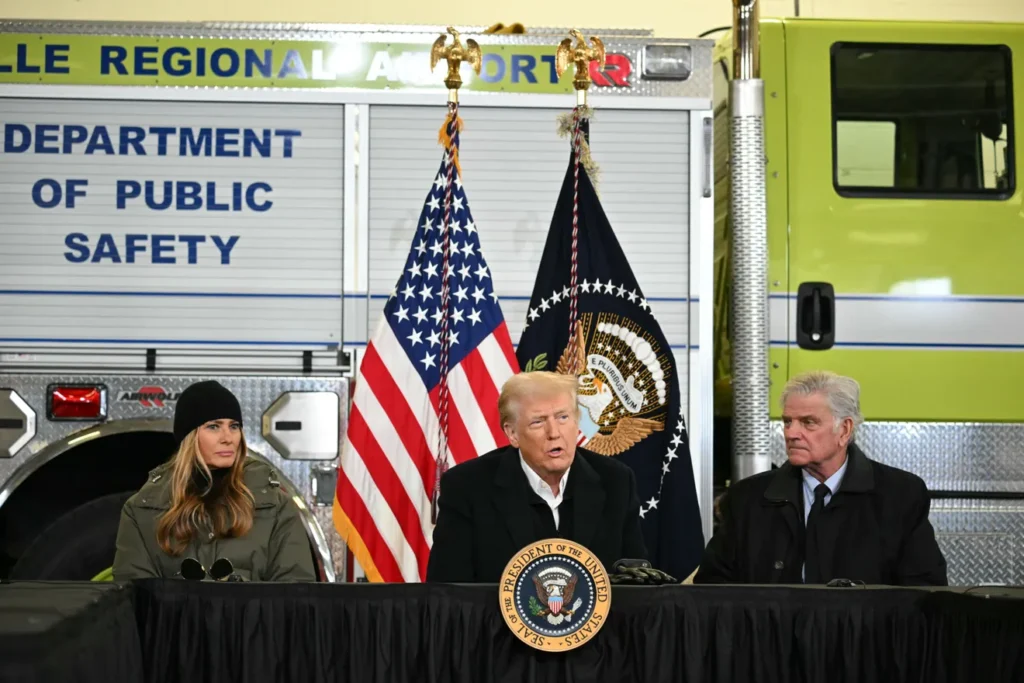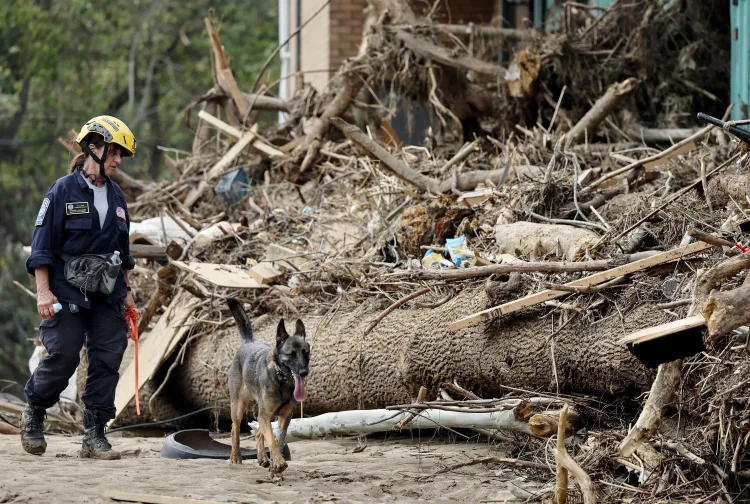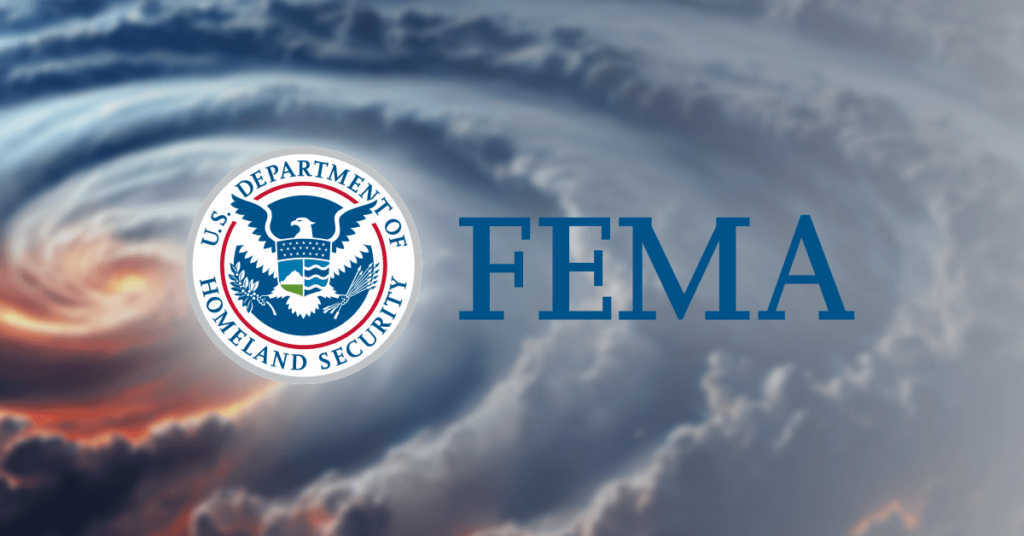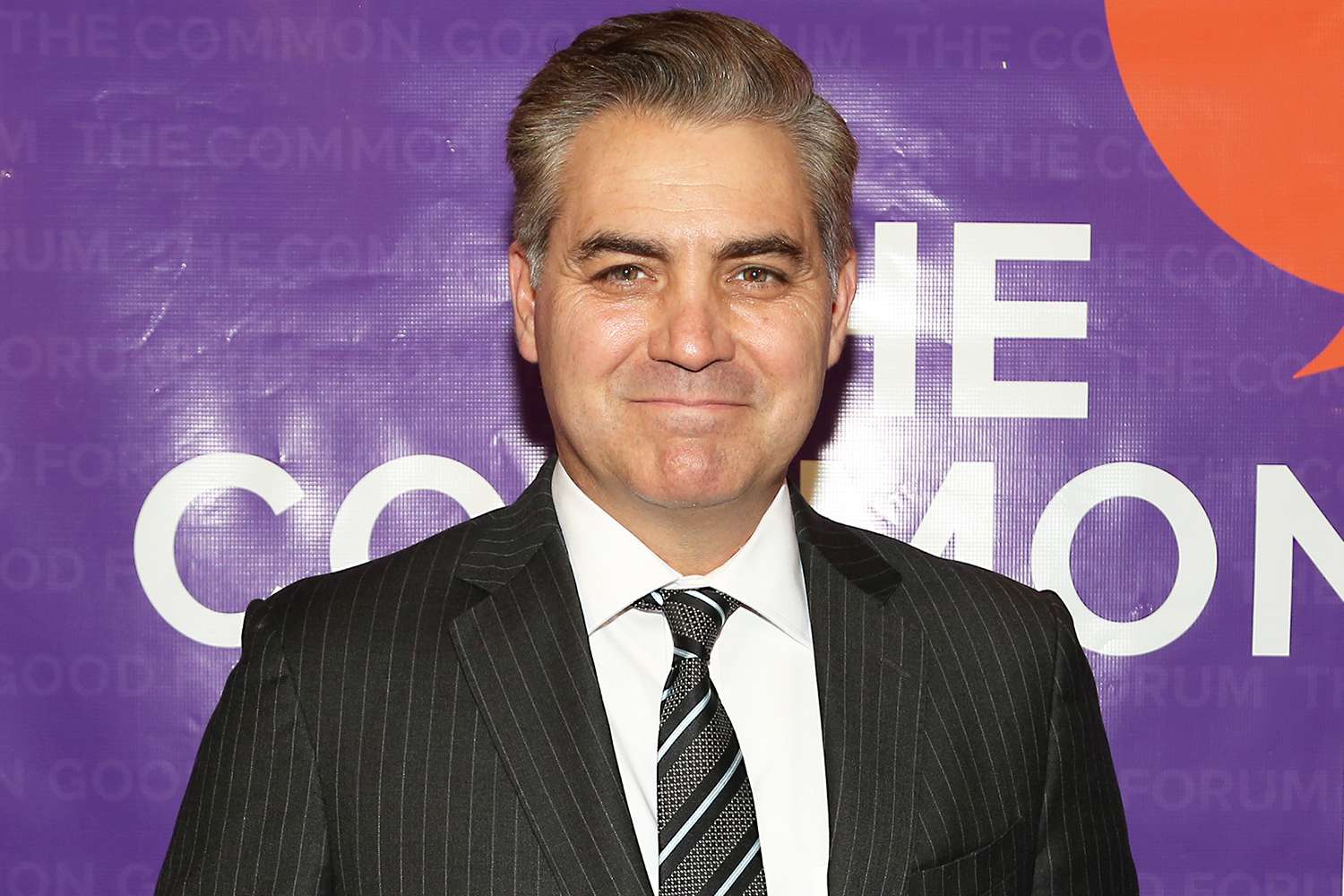
FEMA : Learn about FEMA’s efforts, challenges, and key role in disaster recovery, including insights into recent controversies and responses. Stay updated on disaster management with actionable insights.
FEMA’s Role in Disaster Recovery: Challenges, Responses, and Controversies
The Federal Emergency Management Agency (FEMA) plays a pivotal role in disaster recovery across the United States. Established to coordinate federal disaster responses, FEMA ensures that communities devastated by hurricanes, wildfires, floods, and other emergencies receive the support they need. However, the agency has often faced criticism for delays, inefficiencies, and political challenges in its responses.
This article delves into FEMA’s responsibilities, its role in recent disasters such as Hurricane Helene, and the lessons learned to enhance disaster recovery efforts.
What is FEMA, and What Does It Do?
FEMA, a part of the Department of Homeland Security (DHS), is tasked with preparing for, responding to, and recovering from disasters. Its primary objectives include:
- Disaster Preparedness: Educating communities on disaster risks and ensuring emergency plans are in place.
- Emergency Response: Coordinating federal support during disasters, including mobilizing resources, personnel, and funding.
- Recovery Assistance: Providing financial aid to rebuild infrastructure, homes, and communities.
- Mitigation Programs: Implementing strategies to minimize future disaster impacts.
FEMA’s work is often in collaboration with state and local governments, NGOs, and private organizations.
FEMA’s Response to Hurricane Helene
Hurricane Helene wreaked havoc across the southeastern United States, leaving widespread destruction in its wake. FEMA’s response to this disaster has drawn mixed reviews.
According to local reports, former President Donald Trump criticized FEMA’s handling of the recovery efforts. The criticism centered on delays in delivering aid, inadequate housing solutions, and a lack of communication with local authorities.
However, FEMA officials defended their actions, citing the scale of the disaster and logistical hurdles. While the agency deployed disaster recovery teams promptly, local governments struggled to coordinate with federal representatives effectively.
Challenges Facing FEMA
Despite its critical role, FEMA faces numerous challenges:
- Bureaucratic Delays: Complex processes often slow the delivery of aid to affected areas.
- Funding Constraints: With increasing disasters, FEMA’s resources are often stretched thin.
- Communication Gaps: Coordination between federal, state, and local agencies remains inconsistent.
- Public Perception: Media scrutiny and political criticism impact FEMA’s reputation and effectiveness.
Steps FEMA is Taking to Improve
FEMA has acknowledged the need to enhance its disaster response mechanisms. Key improvements include:
- Investing in Technology: Advanced tools for disaster tracking and damage assessment.
- Enhancing Training Programs: Educating state and local officials to streamline disaster management.
- Strengthening Community Resilience: Expanding mitigation projects to minimize disaster risks.
- Transparency Initiatives: Publishing detailed recovery progress reports.
For more insights into FEMA’s future plans, visit their official website.
Programs such as the Community Rating System incentivize localities to adopt floodplain management practices, reducing disaster risks and improving FEMA’s effectiveness.

The Role of Local Communities in Disaster Recovery
While FEMA leads federal efforts, local communities are on the front lines of disaster recovery. Strengthening collaboration between FEMA and local governments can significantly improve outcomes.
To explore how local efforts can complement federal initiatives, check out related articles on The Newsify.
FEMA’s Collaboration with Non-Governmental Organizations
NGOs and private organizations play an essential role in disaster recovery, often bridging gaps left by FEMA. Charities such as the Red Cross and United Way work closely with FEMA to deliver food, shelter, and medical aid to those in need.
Learn more about these partnerships and how they contribute to community resilience here.
Hurricane Helene: A Case Study
The recovery from Hurricane Helene underscores the importance of efficient disaster management. Key takeaways include:
- Pre-Disaster Planning: Stronger community education programs are needed.
- Faster Fund Allocation: Streamlining federal aid processes.
- Community Engagement: Encouraging grassroots-level participation.
For comprehensive coverage on disaster management and FEMA’s role, browse our latest articles.
How FEMA Can Evolve to Meet Future Challenges
With climate change intensifying disasters, FEMA must evolve its strategies. Future priorities include:
- Expanding disaster insurance programs.
- Collaborating with tech companies for real-time disaster monitoring.
- Increasing public-private partnerships to pool resources during crises.
Key Takeaways from Recent FEMA Criticisms
Hurricane Helene’s aftermath revealed several areas where FEMA must improve:
- Communication: Building trust with state and local governments.
- Resource Allocation: Addressing the needs of vulnerable populations.
- Accountability: Ensuring transparency in disaster recovery efforts.
By learning from these lessons, FEMA can enhance its reputation and effectiveness.
FEMA remains a cornerstone of the United States’ disaster management system. Despite its challenges, the agency continues to evolve, adapting to new crises and improving its responses. As communities brace for more frequent disasters, a united effort between FEMA, local authorities, and NGOs is essential to ensure swift recovery.
Stay informed about FEMA’s latest initiatives and disaster management strategies by visiting The Newsify for updates.
President Trump’s Visit to Western North Carolina: A Turning Point for Disaster Relief
On January 24, newly appointed President Donald Trump, accompanied by First Lady Melania Trump, paid a significant visit to Western North Carolina (WNC). This marked his first official trip back to the region since assuming office, a visit rooted in addressing the aftermath of Hurricane Helene and FEMA’s response—or lack thereof—to the disaster. The visit stirred discussions about federal disaster relief, the role of state governance, and the future of FEMA.
FEMA’s Shortcomings Highlighted

President Trump did not mince words when addressing the crowd in Asheville. He criticized FEMA’s efforts, stating, “FEMA has failed the people of Western North Carolina.” Trump’s critique of the federal agency stemmed from widespread dissatisfaction among local residents and state officials regarding the speed and efficiency of FEMA’s response to the hurricane.
While addressing supporters and families affected by Hurricane Helene, the president proposed an overhaul—or even the elimination—of FEMA, emphasizing a more localized approach to disaster management. “I like frankly the concept when North Carolina gets hit, the governor takes care of it,” Trump remarked, signaling a shift toward empowering state governments to handle crises independently, with federal support as a backup.
Collaborating with State Leadership
During his visit, President Trump met with North Carolina’s Democratic Governor Josh Stein at the Asheville Regional Airport. Despite their differing political affiliations, both leaders expressed a mutual commitment to aiding the region’s recovery. Governor Stein presented two key requests to the president:
- An additional $20 billion in federal aid to support ongoing recovery efforts.
- A six-month extension of 100% federal reimbursement for cleanup costs.
Governor Stein’s requests underscored the immense financial strain on the state and the need for substantial federal assistance. Trump’s response suggested a willingness to fast-track relief through executive orders, bypassing bureaucratic delays. This sentiment was echoed by Congressman Chuck Edwards, who accompanied the president on Air Force One and described FEMA as a “broken bureaucratic system.”
Executive Orders and Fast-Tracking Recovery
One of the most notable announcements during President Trump’s visit was his plan to sign an executive order lifting regulations that require permits for road reconstruction in disaster-affected areas. “We’ll be at your side for the rebuilding, and no American is going to be left behind,” Trump assured residents. This move aims to expedite infrastructure restoration and provide immediate relief to communities grappling with damaged transportation networks.
President Trump’s approach highlights his administration’s emphasis on cutting red tape to accelerate recovery efforts. By removing regulatory hurdles, the administration hopes to empower local communities to rebuild faster and more efficiently.
Firsthand Accounts from Affected Families
Rather than conducting an aerial tour of the hardest-hit areas, President Trump chose to meet directly with families in Swannanoa, a community still reeling from the hurricane’s impact. This hands-on approach allowed the president to hear personal stories from residents who had lost their homes and livelihoods. One family recounted how their house was submerged 25 feet underwater, while another described how their home had been swept away and destroyed.
These emotional testimonies underscored the urgency of the recovery efforts and the resilience of the WNC community. President Trump’s visit to Swannanoa marked his second trip to the area since the storm, reinforcing his commitment to supporting the region’s recovery.
The Future of FEMA
As the Trump administration evaluates the future of FEMA, questions loom about the agency’s role in disaster response. President Trump’s remarks suggest a paradigm shift toward decentralizing disaster management, empowering state and local governments to take the lead. “FEMA has to either be eliminated or overhauled,” Congressman Edwards said, echoing the president’s sentiments.
This proposed shift raises important considerations about funding, resources, and the capacity of state governments to handle large-scale disasters. While localizing disaster response could reduce bureaucratic delays, it may also place significant financial and logistical burdens on states. Balancing federal support with state-led initiatives will be crucial in ensuring effective disaster management.
Building Back Better

In his discussions with affected residents, President Trump emphasized the importance of rebuilding stronger and more resilient communities. “People are also rebuilding their houses — how long does it take to build a house, right? It takes time, and I want them to build houses bigger, better, and nicer than they had before so they can at least get something out of this disaster,” he said.
This vision aligns with the administration’s broader goals of enhancing infrastructure and fortifying communities against future disasters. By investing in resilient construction and modernized infrastructure, the region can better withstand future storms and minimize the risk of widespread devastation.
Political Implications and Public Reception
President Trump’s visit to WNC highlighted his administration’s commitment to addressing the needs of disaster-stricken communities. His direct engagement with residents and willingness to implement swift changes through executive orders resonated with many locals. However, critics argue that eliminating FEMA could have unintended consequences, leaving states vulnerable during large-scale disasters that exceed their resources.
The bipartisan cooperation between President Trump and Governor Stein also sent a powerful message about prioritizing the needs of citizens over political differences. This collaborative approach may serve as a model for future disaster recovery efforts.
Conclusion
President Trump’s visit to Western North Carolina marked a pivotal moment in the region’s recovery from Hurricane Helene. By addressing FEMA’s shortcomings, proposing localized disaster management, and committing to rebuilding stronger communities, the president outlined a bold vision for the future of disaster relief in America. As the region continues to recover, the effectiveness of these initiatives will serve as a test of the administration’s ability to deliver on its promises.
For the residents of WNC, the road to recovery remains long, but the president’s visit offered a glimmer of hope and a renewed sense of urgency. With federal and state leaders working together, the people of Western North Carolina can look forward to a brighter, more resilient future.









Leave a Reply